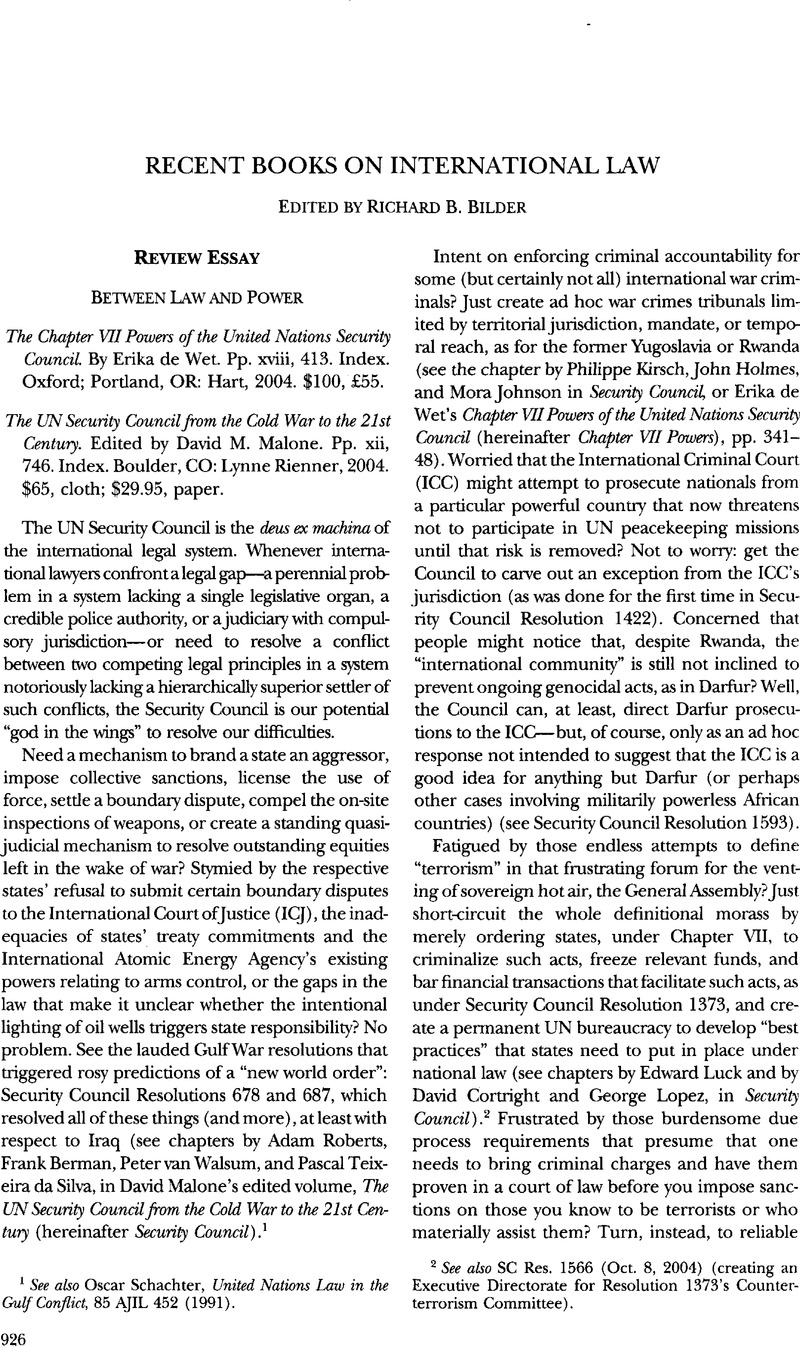Published online by Cambridge University Press: 27 February 2017

1 See also Schachter, Oscar, United Nations Law in the Gulf Conflict, 85 AJIL 452 (1991).CrossRefGoogle Scholar
2 See also SC Res. 1566 (Oct. 8, 2004) (creating an Executive Directorate for Resolution 1373’s Counterterrorism Committee).
3 See generally Thomas, M. Franck, The Emerging Right to Democratic Governance, 86 AJIL 46 (1992).Google Scholar
4 With respect to Afghanistan, see SC Res. 1368 (Sept. 12, 2001) and SC Res. 1373 (Sept. 28, 2001) (affirming the inherent right of individual and collective self-defense in the shadow of die United States’ then looming Operation Enduring Freedom).
5 Higgins, Rosalyn, The Development of International Law Through the Political Organs of the United Nations (1963).Google Scholar
6 See also Lori, F. Damrosch et al., International Law: Cases And Materials 975 (2001)Google Scholar (suggesting that military intervention to rescue nationals being held hostage might be acceptable, citing Israeli and U.S. arguments in the Security Council after the Entebbe incident).
7 See also id. at 966 (citing Council Resolution 573, which condemned Israel’s air attack on the headquarters of the PLO in Tunisia in response to the PLO’s terrorist activities).
8 Wallensteen and Johannsoon document the Council’s post-Cold War activism through a number of statistics, from the rise in the number of Council resolutions (from roughly one decision per month before 1989 to one per week thereafter), to the rise in the number of Chapter VII resolutions (93 percent of all such resolutions adopted from 1946-2002 having been adopted since the end of the Cold War), to the decline in the use of the veto (such that only seven were deployed in the 1990s, the lowest in any decade in UN history). Security Council at 17-33.
9 But Malone also indicates that none of his contributors doubted that Council decisions create important “precedents,” “cumulatively shape perceptions and interpretations of law,” and increase the “legitimacy” of a variety of undertakings. Security Council at 635.
10 Erika de, Wet, The International Constitutional Order 7, 9 (2005)Google Scholar; see also Chapter VII Powers at 116 (discussing the UN Charter as representing an “embryonic international constitutional order”).
11 See also The International Constitutional Order, supra note 10, at 18-19.
12 Case T-306/01, Aden v. Council (Eur. Ct. Justice) (initiated Dec. 10, 2001) (mentioned in Chapter VII Powers at 383 n.43). The European Court of First Instance has now dismissed this case, see Case T-306/01, Yusuf v. Council (Sept. 21, 2005), see also Case T-315/01, Kadi v. Council (Eur. Ct. First Instance Sept. 21, 2005), but the dismissal may be appealed.